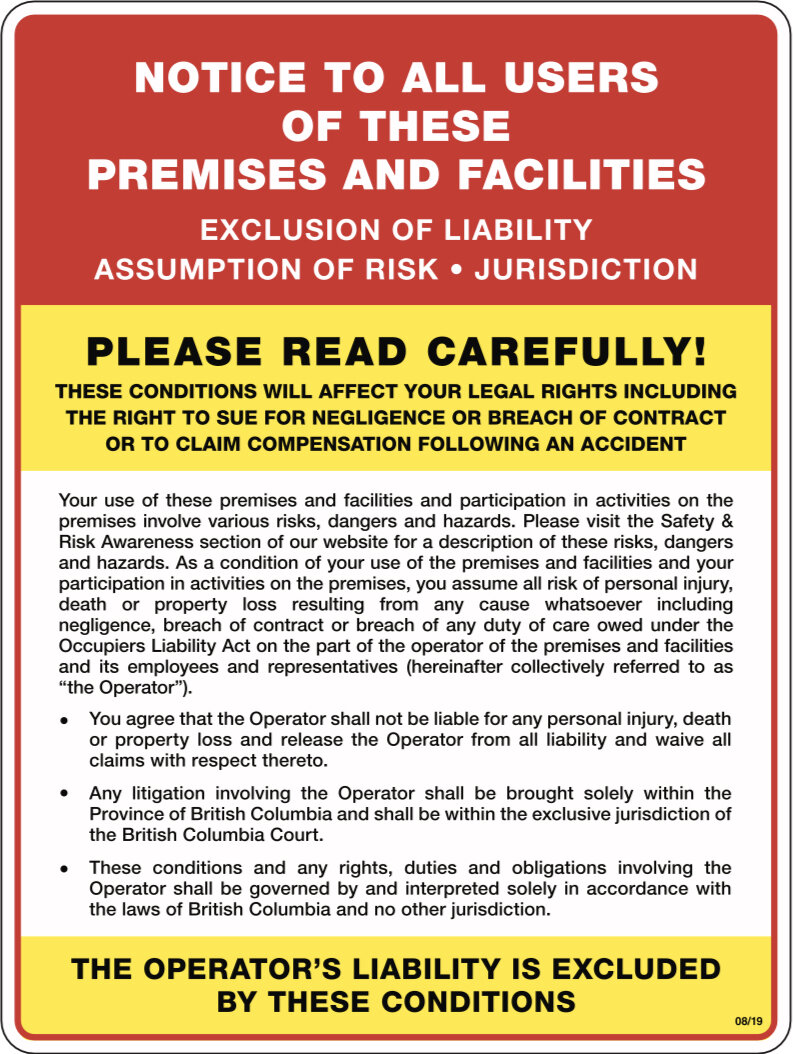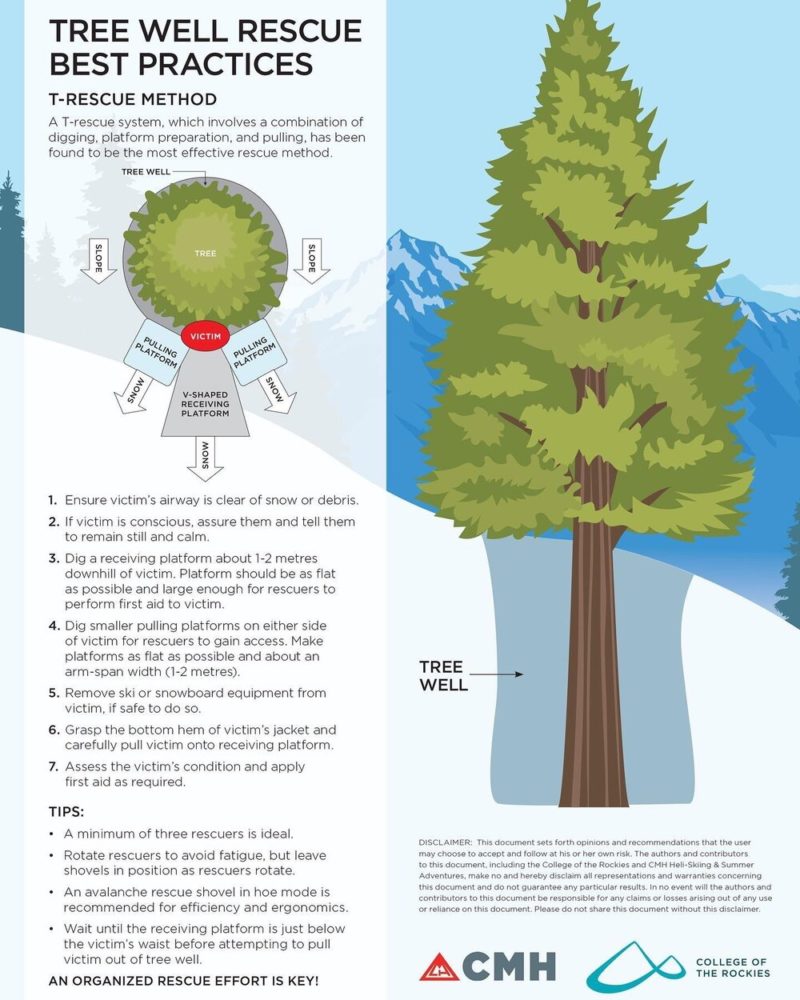Safety & Risk Awareness
Snowcat skiing, snowboarding, and other activities that take place in wilderness areas involve the risk of injury. Please follow the link to familiarize yourself with the possible hazards.
COVID-19 & Infectious Disease
Please refer to our infectious disease management protocols and safety plan here.
Safety
At Retallack, safety is our number one priority. We are regarded as an industry leader in terms of safety and rescue skills. All of our professional guides are trained in guiding, client care, wildlife risk management, advanced first aid, advanced rescue, and are intimate with our rescue plan. Many of our staff are also certified Non-Urban Outdoor Emergency Care Technicians trained in Advanced Protocols and medication administration that operate under the oversight of our Medical Directors. We have extensive experience with safety wrangling and site location / construction for action sports films, competitions, and photo shoots. In addition, we interoperate closely with other emergency medical services and undergo extensive external safety audits every five years. In our most recent audit, we once again achieved full marks. The following provides an additional overview regarding key elements of our Mountain Safety Program.
Safety Meetings
At Retallack, our guides, snowcat drivers, and avalanche forecaster comprise our Mountain Safety Team. All Retallack guides and snowcat drivers meet each morning and evening to analyse weather data, snow stability and terrain choice based on field observations, snow pit data and information received from our mountain weather stations.
During the morning we review reports from all of the other snowcat and heliskiing operators in the province regarding their conditions and snow stability. This enables us to obtain a “big picture” view of our conditions and evaluations and compare them to our industry peers.
Our morning meetings are designed to encourage rigorous decision-making based on factual evidence and to prepare our personnel before they enter the mountains. As a result of this analysis and discussion, our mountain safety team creates a ‘Run List’ for the day. All of our runs have been mapped by satellite mapping techniques.
Once in the backcountry, the final decision to ski or board a run is based on the team’s decision and nothing is skied that the group is not comfortable with. Throughout the day, our Mountain Safety Team members are in constant communication to ensure that we are able to safely adapt to any weather or snow changing conditions should they occur.
During the evening, we meet again to re-assess our previous decisions and identify any additional improvements so that we continue to make our guest’s experience as safe and as enjoyable as humanly possible.
Snow Safety
Our operating protocols allow us to be conservative with weather. When the snow stability is good we have more available skiing and boarding options. If the rating is fair or poor we ski more moderate slopes, those less exposed to potential avalanches. We select semi-level, low angle terrain in steepness with no or less probability of avalanche in size. This way we greatly reduce the risk. Occasionally your guide will stop and dig a snow pit. They make a snow profile to find a gliding layer, perform a shear test and assess for a potential avalanche. Skiing and boarding terrain follows selection and guiding procedure is adjusted accordingly.
At Retallack we have developed a comprehensive snow and avalanche management system which includes procedures for collecting weather and snow information, evaluating snowpack stability, assessing hazards in the terrain, and determining an appropriate skiing program.
To control snow stability, our mountain safety staff occasionally use techniques such as ski cutting, snowcat snow pushes (also known as a “cat push”), explosives in conjunction with certified blasting technicians, and a new device called a “Daisy Bell” that delivers a loud sonic boom.
At Retallack, we actively participate in research projects conducted by the Canadian Avalanche Centre, the University of Calgary, the University of British Columbia and other international organizations. All of our data is electronically compiled daily and shared with the Canadian Avalanche Centre.
Vehicle Safety
At Retallack, we utilize a standard fleet of Bombardier Snowcats. All of our snowcat drivers are qualified to operate these machines. In addition, we utilize certified Bombardier mechanics. Each morning and evening, our snowcats undergo a safety inspection.
Our snowcat drivers are responsible for ensuring that their snowcat operates as efficiently and safely as possible without affecting the environment. Prior to boarding, each of our guests will be trained on snowcat safety procedures.
We occasionally utilize snowmobiles during the course of our mountain operations. All staff members are required to adhere to our strict operating protocols regarding snowmobile safety. Our mountain safety staff is also trained in helicopter operations.
Communications
All Retallack guides and drivers, as well as the lodge and office staff have radios and satellite phones with them all day. Our radio repeater system is strategically placed to provide reliable communication throughout our backcountry environment. Retallack Lodge constantly monitors the radio channels and the location of each vehicle. Each snowcat must maintain regular contact and report which ski run and the number of skiers for each run.
Retallack Lodge is equipped with redundant communication systems including: two separate satellite communication networks, VHF radio, Internet (WIFI and Ethernet access), and backup satellite phones. If outside assistance is required, we are able to access E-Comm, a 911 call centre that provides emergency communication services, dispatch, and support systems to emergency responders and the two-million residents of southwest B.C.
Guest Training & Prep
At Retallack we take the safety of our guests and staff very seriously and we continuously strive to minimize the risks inherent to the backcountry. However, there are many factors that we cannot eliminate. Prior to your trip you will be asked to accept these risks in writing by signing a “Release of Liability, Waiver of Claims, Assumption of Risks and Indemnity Agreement” before being allowed to go skiing or snowboarding with us. A properly and fully completed waiver is required from each guest prior to your trip.
Each guest is provided a Retallack backpack, a BCA Tracker DTS avalanche transceiver, shovel, probe, and guest radio. You will be trained on the proper use of this equipment and will be required to carry this at all times while in our backcountry environment. Each Retallack guide carries a pack with avalanche safety gear, rescue equipment, and a first aid kit. Our snowcats are also equipped with additional specialized rescue / medical gear and backup satellite phones.
It is imperative that you give full attention to your guide’s instructions at all times. You and your guide are in a position of mutual trust. Your guide trusts you to follow their instructions, and to stay within the parametres they set. Following instructions and skiing or boarding with caution are the best ways to prevent injury or incident. When we ski in the trees or visually demanding conditions we will also use the ‘buddy system’ for your safety.
The safety briefings and training you receive upon arrival will explain the risks of backcountry skiing and boarding as well as safety in and around our snowcats. These briefings are designed to enable you to understand our safety protocols and allow you to participate with us in managing them to the fullest extent possible.
Guiding
All of our guides are professionals who undergo an extensive and exacting certification process, in which client care and judgement are the primary focus. Becoming a full fledged guide requires years of experience and training. Every one of our guides is certified by either the Association of Canadian Mountain Guides (www.acmg.ca) or the Canadian Ski Guide Association (www.csga.ab.ca).
Every day at Retallack, each group has a snowcat driver, a guide and a tail guide. Occasionally, we also utilize a team of safety guides that operate separately from the skiing program. Our safety guides make additional observations in order to facilitate informed decision making by our guiding team. Observations are shared daily between all Retallack Mountain Safety Team members.
Retallack’s Lead Guide helps facilitate guest safety and the ski program. The Lead Guide is responsible for working with each guide, the drivers, and the snowcat road builders to maximize the safety and enjoyment of our guest’s experience. All of our guides must continuously strive to improve their skills – including people skills.
Rescue & Medical Control
At Retallack, we recognize that we are part of an extended emergency chain of care. As such, we actively work with the Royal Canadian Mounted Police (RCMP), British Columbia Ambulance Service, local hospitals and other emergency services. We have established helicopter evacuation agreements and have access to critical incident stress personnel. Many of our staff are certified Non-Urban Outdoor Emergency Care Technicians trained in Advanced Protocols / medication administration and they operate under the oversight of our Medical Directors. All of our medical protocols are evidence-based and have been tailored for our operating environment.
All of our guides are equipped with guide packs containing first aid, avalanche safety and rescue gear. All of our vehicles are equipped with additional rescue equipment including mountain extrication gear such as toboggans, ropes, and backup communication gear. Doctor’s kits and defibrillators are also available to our staff. All rescues and extrications are conducted according to our strict operating protocols.
At Retallack, we strive to maintain a culture of continuous quality improvement. As such, all of our rescue and medical control systems undergo continuous internal and external review.
Continued Professional Development
All of our staff members are required to undergo continued professional development. Mountain safety professional development occurs through internal training programs as well external training conducted by associations such as Association of Canadian Mountain Guides, the Canadian Ski Guide Association, the Canadian Avalanche Association, and Peak Emergency Training.
In an effort to encourage best practices, we also actively encourage other backcountry operators to visit and share their experiences with us.






